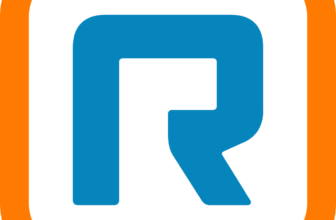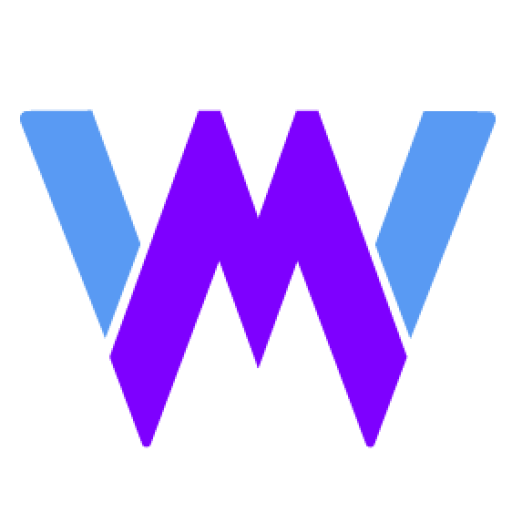Introduction
Choosing a communications platform for your business is more than just picking a phone system. You need a unified solution that brings voice, video, messaging, and contact center capabilities under one roof. 8×8 has built its name on delivering cloud‑based communications for organisations of all sizes, from startups to enterprises. Unlike traditional PBX systems, 8×8’s services run entirely over the internet, allowing teams to work from anywhere while maintaining a local presence in dozens of countries.
In this comprehensive 8×8 review, you will discover how the platform works, examine its key features, dig into its pricing structure, and weigh the pros and cons. You’ll also learn about real‑world user experiences, see which businesses can benefit most from 8×8, and compare the platform against top competitors. By the end of this guide, you’ll have the insights you need to decide whether 8×8 is the right communications partner for your team.
Key Features of 8×8
How 8×8 Works
8×8 is marketed as an Experience Communications as a Service (xCaaS) platform. That means it combines unified communications (UCaaS) and contact centre (CCaaS) functions in one cloud‑based solution. Instead of installing on‑premises servers or separate phone systems, you subscribe to 8×8’s service and access everything via desktop, web or mobile apps.
VoIP foundation & global reach
At its core, 8×8 uses Voice over Internet Protocol (VoIP) to deliver calls, video meetings, and messages over the internet rather than the public switched telephone network. Calls are routed through 8×8’s global data centres, which helps ensure reliability and reduces latency. Businesses can select local, national or toll‑free numbers across more than 55 countries, allowing teams to establish a virtual presence without maintaining physical offices. This global reach makes 8×8 attractive for distributed teams or companies expanding into new regions.
Unified communications & contact centre capabilities
8×8’s Unified Communications component, branded as 8×8 Work, provides voice, video conferencing, team messaging, and basic contact centre tools in one platform. Users can make calls, send SMS/MMS messages, and join HD video meetings from the same application. Features such as voicemail transcription, call forwarding, presence indicators, and call queues streamline day‑to‑day communication.
For more advanced customer service operations, 8×8 Contact Center (plans X6 through X8) adds skills‑based routing, interactive voice response (IVR), call recording, and real‑time analytics. Supervisors can monitor calls, whisper coaching instructions, and barge into conversations when needed. The platform also supports omnichannel routing across voice, email, chat, and social media on the higher‑tier plans, giving agents a single workspace for all customer interactions.
Scalability & reliability benefits
Because 8×8 is cloud‑based, you can add or remove users with minimal effort. New employees simply download the app and log in; there’s no hardware to provision. The vendor advertises 99.9999 % uptime and automatically routes calls to the nearest data centre to maximise call quality. Admins can manage multiple sites from a single console, clone user roles and monitor system health on the go through mobile admin apps. For growing businesses or companies with remote teams, this flexibility is a significant advantage.
Key Features of 8×8
8×8 Work: unified communications
8×8 Work is the cornerstone of the platform for day‑to‑day communications. It consolidates voice, video, and chat into a single application so your team can communicate without juggling multiple tools.
- Voice and video: Make and receive unlimited calls within your chosen country bundle. Video conferencing supports up to 500 participants with HD quality, screen sharing, and whiteboarding. Meetings can be recorded and streamed to YouTube.
- Team messaging: Built‑in chat allows one‑to‑one and group messaging, with file sharing and emojis to keep discussions organised. Chat threads support @mentions and can be public or private depending on your team’s needs.
- Presence and status: View colleagues’ availability through presence indicators and share custom status messages. The system can sync with calendar events to automatically update your status during meetings.
- Multi‑location management: Admins can manage multiple offices or remote workers from one console. You can set up call routing rules based on business hours, languages or skill sets, and transfer calls seamlessly between sites.
Collaboration & productivity tools
8×8 Work includes features designed to simplify collaboration:
- Shared contacts and company directory to quickly find colleagues and clients.
- Voicemail transcription so you can read messages when you’re unable to listen.
- Call queues and ring groups to distribute incoming calls to the right team members.
- Hot desking support for shared workspaces, enabling employees to log in to any desk phone.
These tools make day‑to‑day communications more efficient, particularly for small businesses that need enterprise‑grade features without complex setups.
8×8 Contact Center: advanced customer engagement
For organisations that handle high call volumes or need sophisticated customer support, the Contact Center plans offer additional capabilities.
Skills‑based routing & omnichannel support
The X6, X7 and X8 plans introduce skills‑based routing and IVR to ensure callers reach the right agent quickly. On the X7 and X8 tiers, omnichannel routing expands support beyond voice to include email, web chat, SMS, social media, and video. Agents work from a unified interface that displays customer details, previous interactions and active conversations across all channels. This reduces context switching and improves response times.
Supervisor analytics & quality management
Supervisors can monitor live calls, listen in silently, whisper coaching tips or barge in to resolve issues. Real‑time dashboards display metrics such as queue lengths, average handle time and agent performance. For quality assurance, the X8 tier unlocks quality management and speech analytics, which transcribe calls, analyse sentiment, and identify coaching opportunities. These tools help leaders maintain service standards and continuously improve the customer experience.
AI & automation
8×8’s Conversation IQ leverages artificial intelligence to transcribe conversations and provide sentiment analysis. Automated call summaries capture keywords and topics discussed, helping managers review interactions quickly. Intelligent IVR and chatbots handle routine inquiries, freeing agents to focus on complex issues. While AI features exist, some competitors offer more advanced automation, so businesses seeking cutting‑edge AI should evaluate whether 8×8 meets their expectations.
Integrations & ecosystem
8×8 integrates with over 70 third‑party applications, including CRM and productivity platforms such as Salesforce, Microsoft Teams, Google Workspace, Zendesk and NetSuite. These connectors allow you to log calls directly into your CRM, synchronise contacts, and trigger workflows. A developer hub provides APIs for voice, video, and messaging if you need custom integrations or want to embed communications into your own applications. Hardware support includes compatible desk phones from Poly, Yealink, Audiocodes and Grandstream, so you can continue using physical devices where needed.
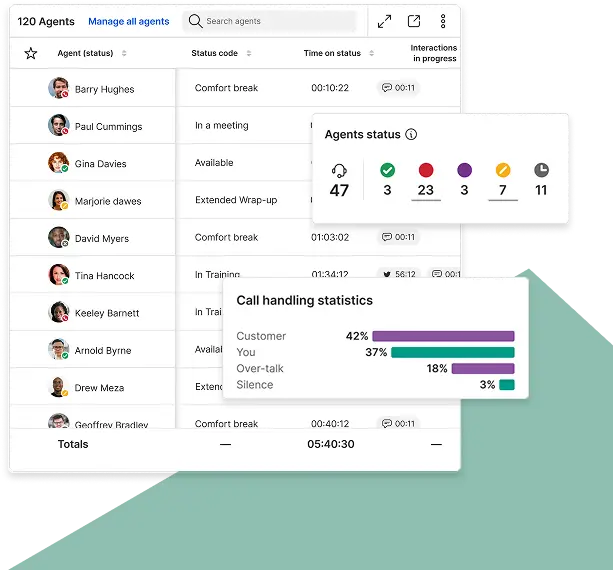
Pros and Cons
Advantages and Disadvantages
Pros
✅ Global unlimited calling
✅ All‑in‑one communications
✅ Scalable & flexible
✅ Robust analytics
Cons
❌ Opaque pricing
❌ Limited AI innovation
❌ Inconsistent customer support
❌ Add‑on fees
Every platform has strengths and weaknesses. Understanding them will help you decide whether 8×8 aligns with your priorities.
✅ Strengths
- Global unlimited calling: Even entry‑level plans include unmetered calling to at least 14 countries, expanding to 48 countries on higher tiers. This saves money for businesses with international clients.
- All‑in‑one communications: 8×8 consolidates voice, video, chat and contact centre capabilities, reducing the need for multiple providers.
- Scalable & flexible: Mix and match plans across departments, add users on demand, and manage multi‑site deployments from one console.
- Robust analytics: Supervisor dashboards and call monitoring provide real‑time insights. Advanced tiers offer speech analytics and quality management.
- Integration ecosystem: Connect with popular CRMs and productivity tools. Developer APIs allow custom workflows and embedded communications.
❌ Weaknesses
- Opaque pricing: Public pricing has been removed, forcing prospective customers to engage with sales for quotes. Many users find this process lengthy and negotiation heavy.
- Limited AI innovation: While 8×8 offers basic AI features, competitors like Nextiva or Zoom provide more sophisticated AI meeting assistants and sentiment analysis.
- Inconsistent customer support: User reviews often mention slow response times and unresolved tickets. Navigating support through chatbots can be frustrating.
- Add‑on fees: Key features such as long‑term call recording, Secure Pay and intelligent IVR require additional purchases. This can drive up the total cost.
- Mobile app glitches: Some users report bugs and call quality issues on mobile devices, especially after updates. Desktop performance tends to be more stable.
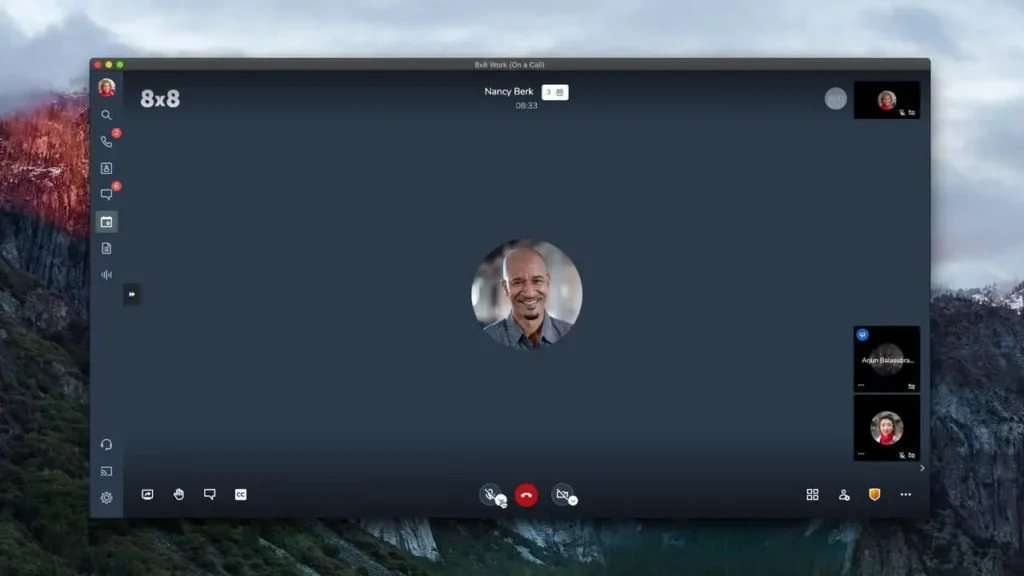
Pricing
How Much Does 8×8 Cost?
Why pricing is now quote‑based
Until late 2023, 8×8 publicly listed its prices. The company has since shifted to a sales‑led pricing model, so you must contact sales to receive a quote. This approach allows 8×8 to tailor packages based on company size, usage patterns, and contract terms. It also makes price comparisons harder because published figures are scarce. Many reviewers criticise the lack of transparency and note that negotiating with sales can be time‑consuming.
Legacy plan pricing
Historical pricing provides a ballpark of what you can expect. 8×8’s X Series unified communications plans previously ranged from around $24 to $44 per user per month, while contact centre tiers started at $85 per user per month. These figures are no longer official but serve as a reference:
| Plan | Key Features | Last Known Price* |
| X2 | Voice, video & chat; unlimited calls in 14 countries; basic analytics | $24 per user/month |
| X4 | Everything in X2 plus unlimited calls in 48 countries, receptionist console & supervisor analytics | $44 per user/month |
| X6 | Voice contact center with skills‑based routing, advanced reporting & agent workspace | $85 per user/month |
| X7 | Omnichannel contact center with chat, email & social media; co‑browsing | $110 per user/month |
| X8 | Enterprise contact center with auto‑dialers, quality management & speech analytics | $140 per user/month |
Add‑ons & hidden fees
Beyond the base plans, 8×8 charges for certain features:
- Long‑term storage: Call recordings are stored temporarily; extended “cold storage” incurs extra fees.
- Secure Pay: A PCI‑compliant tool that lets customers enter payment details securely during calls requires an add‑on.
- Intelligent IVR: AI‑powered self‑service features are available on higher tiers or as paid extras.
- International calling: Unlimited calling covers a set list of countries; calls to mobile or premium numbers and to other countries are metered.
- Training courses: While self‑paced tutorials are free, instructor‑led courses through 8×8 University come with separate costs.
When budgeting for 8×8, factor in these additional costs and clarify them during the sales process.
Which plan suits your business?
- Small teams seeking basic UC: The X2 plan provides voice, video and messaging tools suitable for startups or small offices. However, it lacks CRM integrations and advanced analytics.
- Growing businesses with global reach: The X4 plan adds unlimited calling to 48 countries, a receptionist console and supervisor analytics, making it ideal for mid‑sized organisations with multiple offices or an international presence.
- Customer‑centric organisations: The X6, X7 and X8 plans cater to contact centres. X6 covers voice‑based contact centres; X7 adds full omnichannel support; X8 unlocks quality management, speech analytics and auto‑dialers. Choose based on your volume, channels and analytical needs.
User Experience
Ease of Use & Setup
The 8×8 interface has a clean design on desktop with light and dark modes. Navigation icons make it easy to switch between calls, contacts, messages, and meetings. Users can customise sound profiles and choose ringtones. The call handling process, answering, placing on hold or transferring, feels intuitive, and voicemail transcripts help you keep track of missed calls.
However, the learning curve is steeper for administrators. Configuring call flows, ring groups, and permissions may require some trial and error. Mobile apps provide most features found on desktop, but transferring calls or parking them can be cumbersome on smaller screens. 8×8 frequently updates its apps, and occasional glitches or dropped calls have been reported. Overall, ease of use scores well for end users but less so for admins new to VoIP systems.
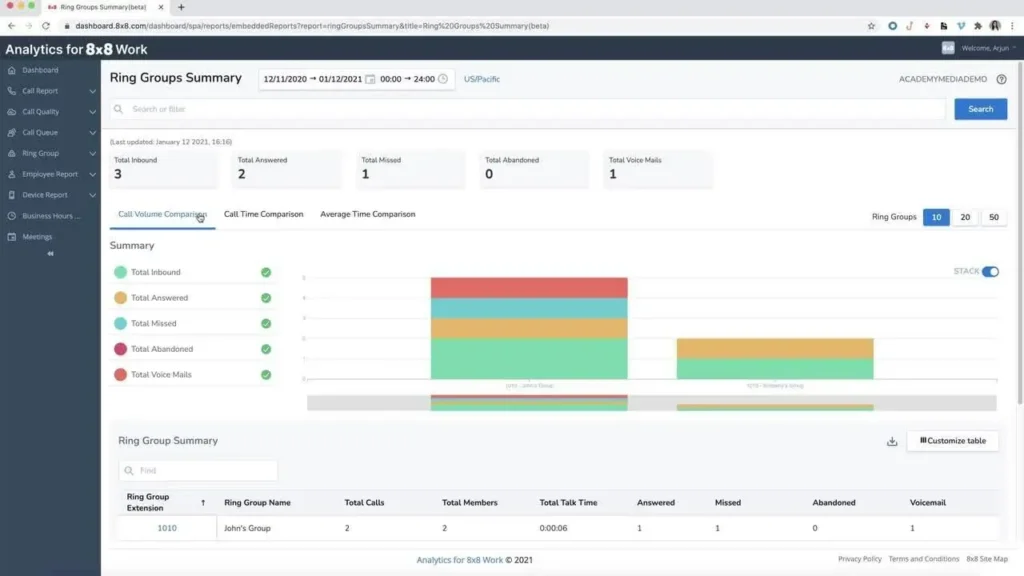
Integrations & Compatibility
How 8×8 Integrates with Other Tools
CRM and productivity integrations
8×8’s marketplace includes connectors for major CRM systems such as Salesforce, HubSpot, Zendesk and Freshdesk. When integrated, calls automatically log in your CRM, and customer records pop up on incoming calls so agents have context. Productivity integrations include Microsoft Teams, Google Workspace, Slack, NetSuite and Dynamics 365. Some integrations, like Microsoft Teams direct routing, may require additional licences or plan upgrades.
Developer APIs & customisation
For companies with unique workflows, 8×8’s Communications Platform as a Service (CPaaS) offers APIs for voice, SMS, chat, and video. Developers can embed click‑to‑call buttons in websites, build SMS notifications or integrate 8×8 into proprietary software. Comprehensive documentation and SDKs accelerate custom development, although technical expertise is necessary.
Hardware & device support
If you prefer physical phones, 8×8 supports handsets from Poly, Yealink, Audiocodes and Grandstream. Softphone users can access the service via desktop or mobile apps on Windows, macOS, iOS and Android. Browser‑based access is also available, making it easy for remote teams to log in from any internet‑connected device.
Customer Support
How is 8×8 Service Quality
Support channels
All 8×8 plans include 24/7 customer support through phone, live chat, and email. Support is available in multiple languages, and the company maintains offices around the world. A comprehensive knowledge base and community forums provide self‑service resources, while Otto, 8×8’s AI‑powered assistant, helps users navigate documentation and troubleshoot issues.
Training resources
8×8 University offers free tutorials, video courses, and interactive demos. These resources teach users how to set up call flows, configure integrations and use advanced features. Instructor‑led courses are also available for a fee. Admins can access training materials directly from the app by clicking the help icon.
User feedback & common complaints
Despite the availability of support, many users report mixed experiences. Some praise the knowledgeable staff, while others say they wait days for a response or get bounced between departments. Navigating automated chatbots before reaching a human can be frustrating. Be prepared to persist if you encounter technical issues, especially during peak hours.
Best Use Cases
Ideal Use Cases & Industries
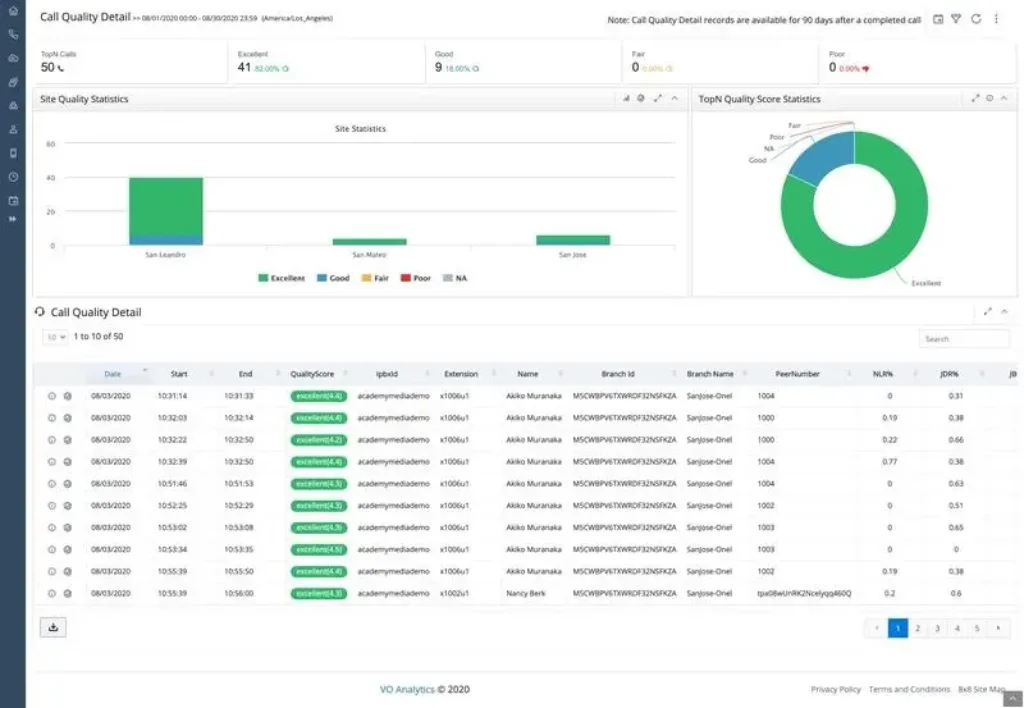
Alternatives & Competitors
How is 8×8 Compared to the Alternatives
Nextiva
Nextiva is a strong alternative known for transparent pricing and exceptional customer support. Its plans combine UCaaS and CCaaS with advanced analytics and AI‑driven features, making it suitable for businesses that value insights into call performance. Nextiva’s reliability and straightforward billing process appeal to organisations that dislike the negotiation‑heavy sales approach of 8×8.
RingCentral
RingCentral offers a comparable suite of VoIP, video conferencing, and contact centre tools. It stands out with customisable call flows, robust call monitoring and a wide range of integrations. Pricing may still require a quote on higher tiers, but RingCentral typically publishes base rates for entry‑level plans. Businesses seeking a well‑established provider with global reach may consider RingCentral.
Zoom Phone
Zoom Phone integrates seamlessly with Zoom Meetings and Team Chat, making it attractive to organisations already using Zoom for video conferencing. The service offers competitive pricing and a user‑friendly interface. However, the platform lacks some of the advanced call analytics and AI features found in other competitors, so it’s best suited for teams that prioritise simplicity.
OpenPhone (Quo)
OpenPhone, recently rebranded as Quo, targets startups and small businesses with transparent, affordable plans. Prices start around $15 per user per month and include unlimited calls and texts in the US and Canada, voicemail transcription, auto‑replies, and AI message responses. OpenPhone’s integration options are more limited than 8×8’s, but its ease of use and straightforward pricing make it a compelling choice for lean teams.
Conclusion
Final Thoughts
8×8 is a feature‑rich communications platform that combines voice, video, chat, and contact centre functions under one roof. Its global reach, mix‑and‑match plans, and robust analytics make it an attractive option for growing businesses with distributed teams or international clients. Unified communications and contact centre capabilities mean you can manage internal collaboration and customer service from a single interface.
However, the platform is not without drawbacks. Since removing public pricing, 8×8 has introduced a sales‑led approach that some customers find frustrating. Hidden fees for advanced features, variable customer support experiences, and limited AI innovation may give pause to businesses seeking transparency and cutting‑edge technology. Before committing, weigh 8×8’s strengths against its weaknesses and consider your organisation’s size, budget and technical requirements. Comparing alternatives such as Nextiva, RingCentral, Zoom Phone and OpenPhone can also help you make an informed decision.
Have more questions?
Frequently Asked Questions
1. What is 8×8?
8×8 is a cloud‑based communications platform offering unified communications and contact centre solutions. It combines voice, video, messaging and contact centre tools to help businesses connect with customers and colleagues from anywhere.
2. How much does 8×8 cost?
8×8 no longer lists prices publicly. Historically, unified communications plans ranged from about $24 to $44 per user per month, while contact centre plans started around $85 per user per month. You must contact sales for a current quote.
3. Does 8×8 offer a free trial?
Yes. 8×8 provides a 30‑day free trial that includes a business phone number with unlimited calls to the US and Canada. More advanced features, such as voicemail transcription or CRM integrations, may require an upgrade.
4. Which 8×8 plan is best for small businesses?
Small teams that need basic voice, video, and chat functionality should consider the X2 plan. It includes unlimited calls in 14 countries and core UC features, but lacks advanced analytics and CRM integrations found in higher tiers.
5. Does 8×8 work with my CRM?
8×8 integrates with popular CRMs such as Salesforce, Zendesk, NetSuite, and Microsoft Dynamics. You can log calls automatically, access customer records during calls and streamline workflows. Some integrations may require specific plans or add‑ons.
6. Can I mix and match 8×8 plans?
Yes. One of 8×8’s strengths is the ability to assign different plans to different users. You can provide entry‑level UC features to some employees while equipping customer service agents with advanced contact centre tools.
7. Is 8×8 suitable for remote teams?
Absolutely. 8×8 is designed for distributed workforces. Employees can make calls and join video meetings from desktop or mobile devices, and admins can manage multiple locations from a single console.
8. What are the main alternatives to 8×8?
Top alternatives include Nextiva, RingCentral, Zoom Phone, and OpenPhone (Quo). These providers offer varying mixes of features, pricing transparency and customer support quality. Comparing them will help you find the best fit for your needs.
9. How reliable is 8×8?
8×8 advertises 99.9999 % uptime, with calls routed through the nearest data centres for optimal performance. While most users experience stable service, some report call quality issues on mobile apps or during network congestion.
10. Does 8×8 provide customer support around the clock?
Yes. All plans include 24/7 support via phone, chat, and email. However, users report mixed experiences with response times and resolution quality, so it’s wise to explore the knowledge base and self‑service resources as well.




